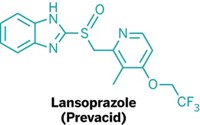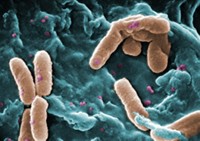Advertisement
Grab your lab coat. Let's get started
Welcome!
Welcome!
Create an account below to get 6 C&EN articles per month, receive newsletters and more - all free.
It seems this is your first time logging in online. Please enter the following information to continue.
As an ACS member you automatically get access to this site. All we need is few more details to create your reading experience.
Not you? Sign in with a different account.
Not you? Sign in with a different account.
ERROR 1
ERROR 1
ERROR 2
ERROR 2
ERROR 2
ERROR 2
ERROR 2
Password and Confirm password must match.
If you have an ACS member number, please enter it here so we can link this account to your membership. (optional)
ERROR 2
ACS values your privacy. By submitting your information, you are gaining access to C&EN and subscribing to our weekly newsletter. We use the information you provide to make your reading experience better, and we will never sell your data to third party members.
Biological Chemistry
Possible New Therapy For Diarrhea
Pyridopyrimidine derivative inhibits action of bacterial toxin
by Carrie Arnold
June 19, 2008

Forget chugging chalky Kaopectate when your next bout of diarrhea hits. One day, a newly synthesized pyridopyrimidine derivative may be used to halt diarrhea caused by toxin-producing strains of the bacteria Escherichia coli.
The novel compound, identified by pharmacologist Ferid Murad and coworkers at the University of Texas Health Science Center, prevents the heat-stable enterotoxin (STa) secreted by E. coli from stimulating the accumulation of fluids in the intestine and causing diarrhea. Unlike current therapies, which reduce fluids already accumulated, the pyridopyrimidine is the first compound to block the accumulation of fluids entirely.
Approximately 2 million children in developing countries die from diarrheal diseases each year, and bacteria like E. coli cause more than half of these deaths, according to data published in the Bulletin of the World Health Organization. Current treatments for diarrhea, such as rehydration or drugs like Kaopectate, focus on suppressing the disease’s symptoms. Treating bacterial diarrhea with antibiotics isn’t practical, Murad says, citing difficulties in developing an appropriate drug regimen. Furthermore, antibiotics would not decrease levels of STa already present in the intestinal lumen.
Murad identified the bromophenyl-substituted pyridopyrimidine by screening a library of compounds for ones that prevent accumulation of cyclic guanosine monophosphate (cGMP). The compound can be synthesized in a one-step condensation reaction and purified by flash chromatography. The ease of this reaction would help decrease the cost of any future pharmaceuticals derived from the compound, the researchers note.
STa secreted by E. coli binds to the transmembrane guanylyl cyclase type C receptor in intestinal cells, causing intracellular concentrations of cGMP to spike. The increase in cGMP causes accumulation of water and sodium ions in the intestines and, ultimately, diarrhea. The pyridopyrimidine derivative synthesized by Murad’s team prevents the accumulation of cGMP and therefore the efflux of fluid into the intestines (Proc. Nat. Acad. Sci. USA, DOI: 10.1073/pnas.0803096105).
Henry J. Binder, professor of medicine at Yale University, says the pyridopyrimidine derivative “offers great promise.” The compound, he believes, “represents a potentially useful drug in the treatment of cyclic-nucleotide-mediated diarrhea.”





Join the conversation
Contact the reporter
Submit a Letter to the Editor for publication
Engage with us on Twitter